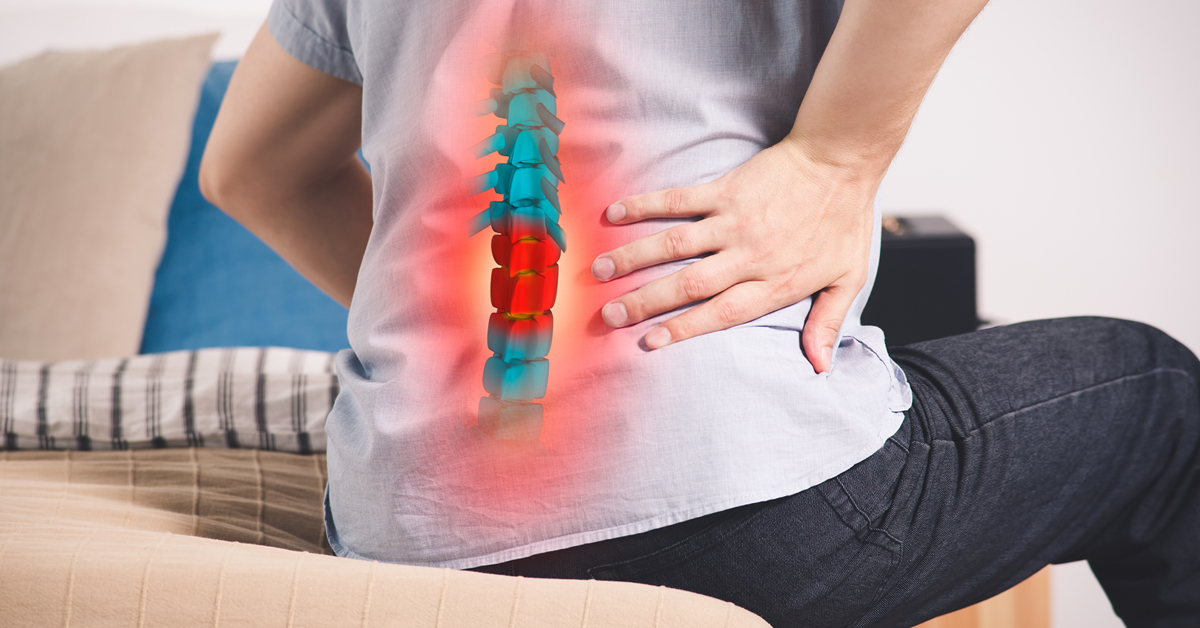What Is a Herniated Disc and How Is It Treated?

A herniated disc is a spinal injury that happens when a vertebral disc ruptures and pushes beyond its normal boundaries. This protrusion can cause inflammation and irritation of the surrounding nerves, leading to pain and other symptoms.
Understanding the anatomy of the spinal discs, signs, symptoms, and treatments can help you know when to seek medical attention and what to expect should you be diagnosed with a herniated disc.
Spinal Disc Anatomy
The spinal column is made up of bones called vertebrae and discs that cushion the vertebrae. These cushions allow the spine to move and bend. If you have a herniated disc, the outer layer of your disc has torn or ruptured and exposed the inner layer.
Risk Factors
Certain factors can increase your risk of developing a herniated disc, including:
- Older age
- Obesity
- Smoking
- Activities that involve repetitive motions
People with diabetes and osteoporosis are also at a higher risk for a herniated disc.
What Causes a Herniated Disc?
Herniated discs most frequently affect the lower back and are commonly caused by long-term wear and tear or physical trauma. When a portion of a disc is driven through a vulnerable area of the spine, it becomes herniated or slipped. As a result, your spinal cord or surrounding nerves may be compressed.
Wear and Tear on the Spine
Herniated disc pain is frequently the result of daily wear and tear on the spine, a condition also known as disc degeneration. Activities such as lifting heavy objects, poor posture while sitting, strenuous exercise, or completing physical labor while bent over can increase your risk of disc herniation.
Physical Trauma
A herniated disc might develop because of a single, severe strain or injury such as a sports injury or a car accident. Prior to the accident, disc degeneration may have weakened a disc, making it more likely to rupture in a traumatic event.
Sometimes, a disc might have gotten so weak that even something insignificant can cause a herniated disc. An example is when someone herniates a disc by sneezing. A sneeze might not seem like something that could result in harm, but if you already have a weak disc, the sudden force of a sneeze can cause a disc to herniate.
Signs and Symptoms of a Herniated Disc
The most common symptom of a herniated disc is pain in the lower back. Pain may be accompanied by numbness, tingling, or weakness in the legs or feet. In some cases, the pain may radiate down one side of the body and into the buttocks, groin, or legs.
Herniated Disc Treatment
Treatment for a herniated disc depends on the severity of the condition and the symptoms you’re experiencing. The goal of treatment is to reduce pain and improve mobility. Treatment options include rest, physical therapy, medications, and in some cases, surgery.
- Rest is often the first step in treating a herniated disc. The doctor may advise you to take a few days off work and avoid activities that may worsen the pain.
- Physical therapy can help strengthen the back muscles and improve range of motion.
- Medications such as nonsteroidal anti-inflammatory drugs (NSAIDs) and muscle relaxants can reduce pain and inflammation.
- In severe cases, surgery may be recommended to remove the herniated disc.
What to Do If You Think You Have a Herniated Disc
It is important to seek medical attention if you are experiencing lasting or worsening herniated disc symptoms. Your doctor will conduct a physical exam and may order imaging tests to confirm the diagnosis. Once the diagnosis is confirmed, your doctor can recommend the best treatment for your condition.
Don’t let back pain get in the way of enjoying your activities. Schedule an appointment today!

